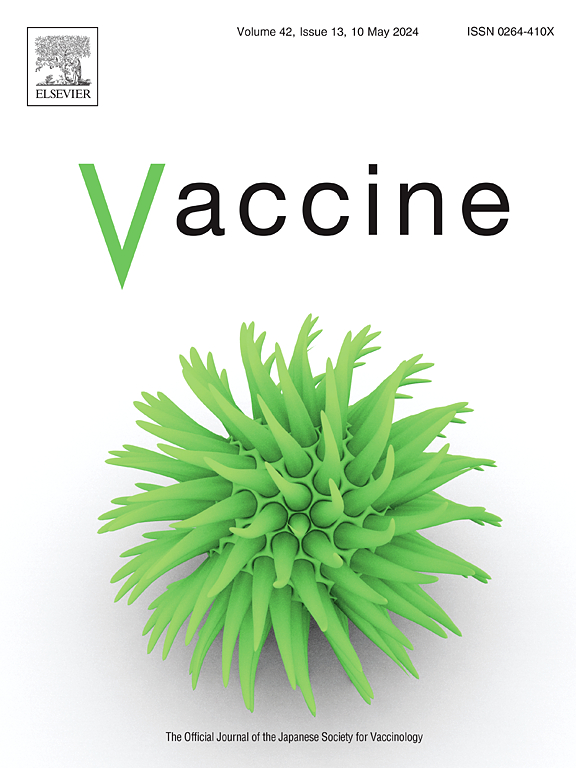一种新型土拉菌减毒活株的疫苗接种。土拉菌保护食蟹猴免受气溶胶土拉菌感染
IF 4.5
3区 医学
Q2 IMMUNOLOGY
引用次数: 0
摘要
土拉弗朗西斯菌是世界上一些地区的公共卫生威胁和潜在的生物恐怖主义制剂,但西方国家缺乏获得许可的土拉弗朗西斯菌疫苗。现有的兔热病候选疫苗在预防最严重的呼吸道形式的兔热病感染方面没有希望。先前的研究确定了一种新的候选减毒活疫苗,土拉菌亚种。土拉菌ΔclpB,它保护啮齿动物免受最致命的弗朗西斯菌生物型气溶胶的攻击。表征表明ΔclpB适用于现代制造。在这里,我们进一步评估ΔclpB对Fischer 344大鼠和食蟹猕猴的保护能力。结果表明,接种ΔclpB皮下免疫的大鼠在接种后一年内存活了高达100中位致死剂量的气溶胶土拉菌攻击,同时减少了感染的临床症状,减少了肺和脾脏的组织病理学和细菌负担。此外,在接种疫苗后1个月和3个月,皮下ΔclpB疫苗接种可保护猕猴免受至少500 MLD的气溶胶土拉菌攻击;在接种疫苗一年后进行测试时,疫苗可改善症状、细菌负担和组织病理。鉴于土拉菌病在自然界的低发病率,因此这些研究为通过临床研究进一步对ΔclpB的有效性和安全性进行基于动物的评估奠定了基础。本文章由计算机程序翻译,如有差异,请以英文原文为准。
Vaccination with a novel live attenuated strain of Francisella tularensis subsp. tularensis protects cynomolgus macaques against aerosol F. tularensis infection
Licensed vaccines against Francisella tularensis, a public health threat in some parts of the world and a potential bioterrorism agent, are lacking in Western countries. Existing tularemia vaccine candidates have not been promising in protecting against the most serious respiratory form of tularemia infection. Previous studies identified a novel live attenuated vaccine candidate, F. tularensis subsp. tularensis ΔclpB, that protected rodents against aerosol challenge with the most virulent biotype of Francisella. Characterization demonstrated that ΔclpB is amenable to modern manufacturing. Here, we evaluated further ΔclpB's protective capacities in Fischer 344 rats and in cynomolgus macaques. Results demonstrated that rats immunized intradermally with ΔclpB survived aerosol F. tularensis challenge with up to 100 median lethal doses administered one year after vaccination, accompanied by reduced clinical signs of infection as well as reduced histopathology and bacterial burdens in lungs and spleens. Moreover, intradermal ΔclpB vaccination protected macaques against at least 500 MLD of aerosol F. tularensis challenge administered one and three months after vaccination; vaccination ameliorated symptoms, bacterial burdens, and tissue pathology when tested one year after vaccination. Given the low incidence of tularemia in nature, these studies therefore lay the foundation for additional animal-based evaluations of efficacy and future safety evaluation of ΔclpB by clinical studies.
求助全文
通过发布文献求助,成功后即可免费获取论文全文。
去求助
来源期刊

Vaccine
医学-免疫学
CiteScore
8.70
自引率
5.50%
发文量
992
审稿时长
131 days
期刊介绍:
Vaccine is unique in publishing the highest quality science across all disciplines relevant to the field of vaccinology - all original article submissions across basic and clinical research, vaccine manufacturing, history, public policy, behavioral science and ethics, social sciences, safety, and many other related areas are welcomed. The submission categories as given in the Guide for Authors indicate where we receive the most papers. Papers outside these major areas are also welcome and authors are encouraged to contact us with specific questions.
 求助内容:
求助内容: 应助结果提醒方式:
应助结果提醒方式:


